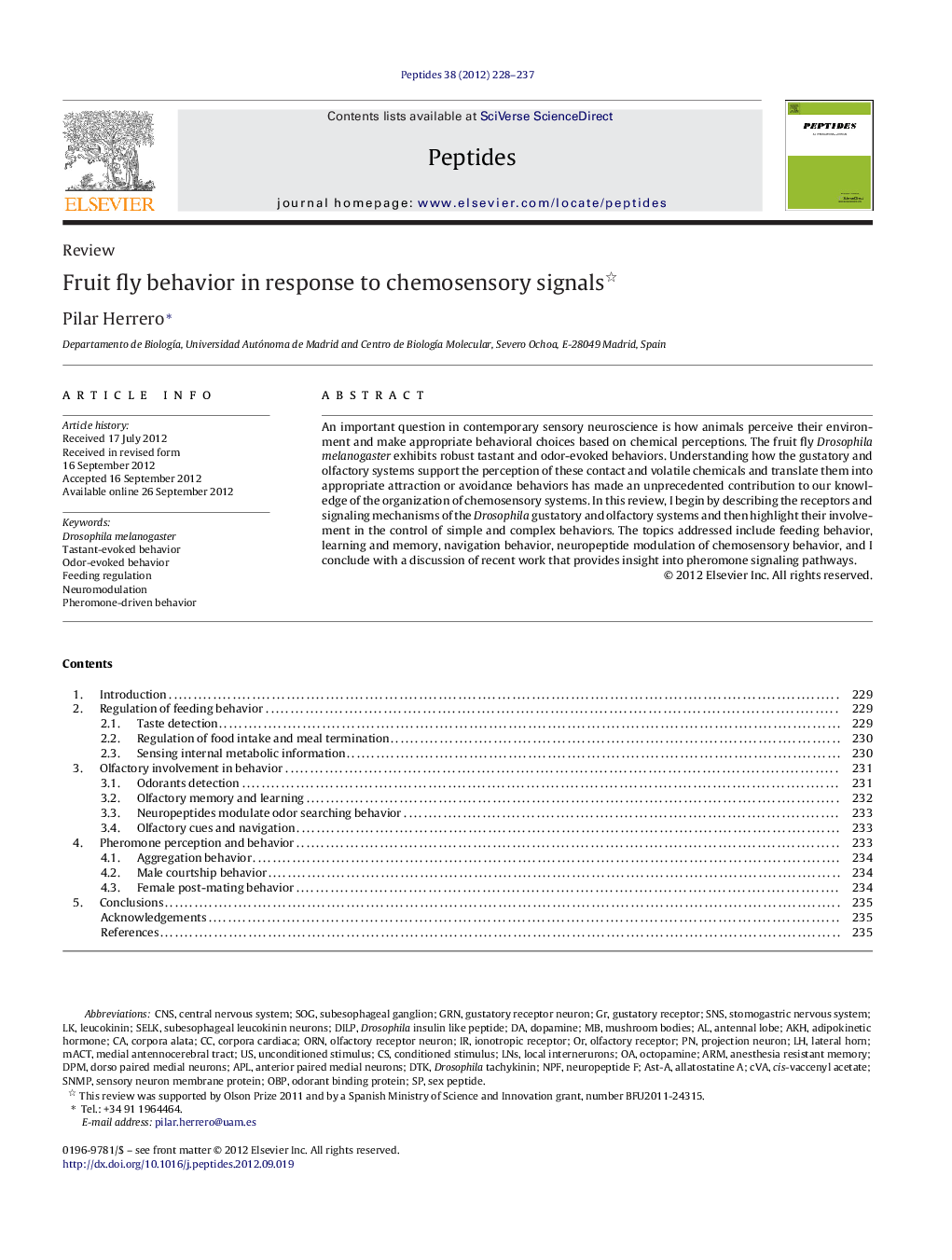| کد مقاله | کد نشریه | سال انتشار | مقاله انگلیسی | نسخه تمام متن |
|---|---|---|---|---|
| 2006267 | 1066326 | 2012 | 10 صفحه PDF | دانلود رایگان |

An important question in contemporary sensory neuroscience is how animals perceive their environment and make appropriate behavioral choices based on chemical perceptions. The fruit fly Drosophila melanogaster exhibits robust tastant and odor-evoked behaviors. Understanding how the gustatory and olfactory systems support the perception of these contact and volatile chemicals and translate them into appropriate attraction or avoidance behaviors has made an unprecedented contribution to our knowledge of the organization of chemosensory systems. In this review, I begin by describing the receptors and signaling mechanisms of the Drosophila gustatory and olfactory systems and then highlight their involvement in the control of simple and complex behaviors. The topics addressed include feeding behavior, learning and memory, navigation behavior, neuropeptide modulation of chemosensory behavior, and I conclude with a discussion of recent work that provides insight into pheromone signaling pathways.
► Taste perception is mediated by 68 types of gustatory receptors in Drosophila.
► Neuropeptides and metabolic hormones are involved in regulation of food intake and meal termination.
► Odorants detection is mediated by 62 types of olfactory receptors in Drosophila.
► Neuropeptides of brain modulate odor search behavior.
► Pheromone perception in Drosophila through gustatory and olfactory receptors trigger aggregation and mating behavior.
Journal: Peptides - Volume 38, Issue 2, December 2012, Pages 228–237